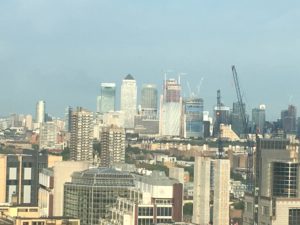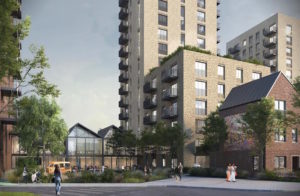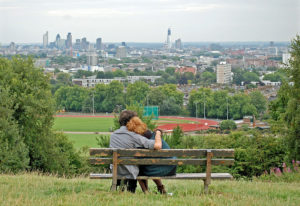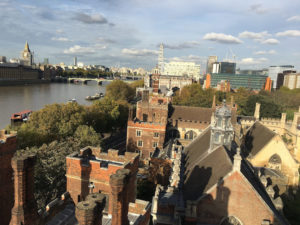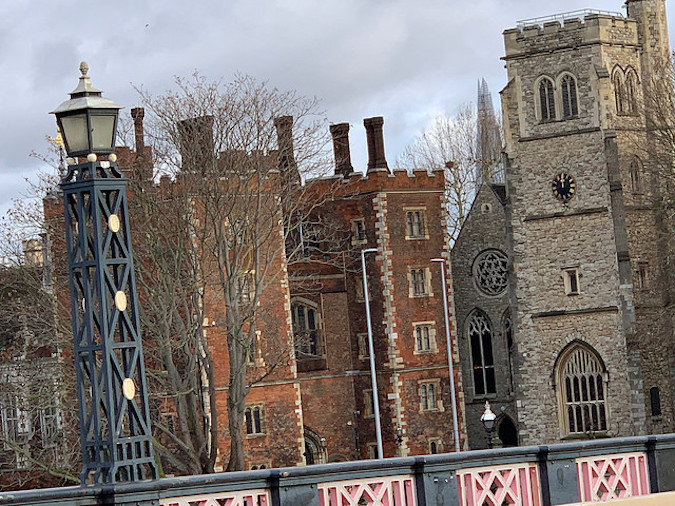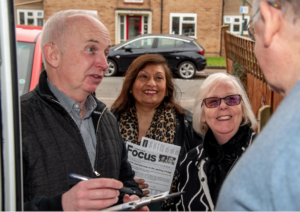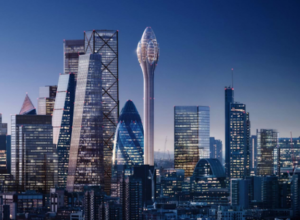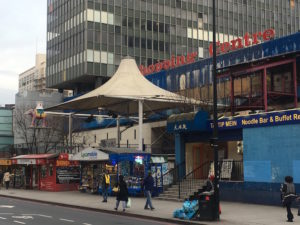Depictions of London as a place of bloody conflict, full of mob criminality, turf wars, violent subversion and demimonde enclaves into which the law’s long arm does not reach go back centuries. Such narratives, in which myth and reality often become hard to distinguish, can define people’s views of the city and reinforce hostile opinions about it. There’s been a lot of it in recent years. Terror attacks and increases in the amount and the viciousness of particular forms of street crime seem to have fuelled proliferating characterisations of London as a “warzone” pocked with “no go zones”. Portrayals of the UK capital as a fundamentally dangerous place contribute to a wider body of contemporary anti-London sentiment which, in turn, often seems to be an expression of wider national discontents.
What has fed this intensification? One obvious place to start would be the 2005 London bombings, commonly known as 7/7. Occurring the day after the city won its bid to host to 2012 Olympics, they shattered a mood of euphoric self-belief and brought home with sickening force that London is seen by jihadists as a suitable setting for atrocities. Another hot spot on the London “warzone” timeline is the 2011 London riots, whose spark was the shooting dead of a man by police in Tottenham. Those conflagrations occurred the year before the Olympics took place, an event which saw a very different version of London – welcoming, global, triumphantly cosmopolitan – come to the fore.
But accounts of the capital as a place of criminality and conflict had continued to be constructed and shared. Islamism provided further true life source material. In 2010, a London MP narrowly survived an assassination attempt by a Muslim constituent. In 2011, stickers and flyers appeared in parts of East London, proclaiming each one a “Shariah controlled zone”. In May 2013, two Muslim men savagely murdered an off duty British soldier on a street in Woolwich. And at the end of that year, three other men were jailed for harassing and physically attacking people in East London for holding hands in public, drinking alcohol or, in the case of a woman, dressing in a manner not to the liking of this so-called “Muslim Patrol”.
Not long after, when seeking to become the Republican presidential candidate, Donald Trump took up the theme. In late 2015, he said that even the police wouldn’t go into to some parts of the UK capital because they are “afraid for their own lives”. The London Mayor of that time, Boris Johnson, rubbished Trump’s remarks, accusing him of “a quite stupefying ignorance that makes him frankly unfit to hold the office of President of the United States”. He also said that there were some parts of New York he wouldn’t wish to visit due to the risk of encountering Trump. But the London Islamist “no go zone” storyline had crossed the Atlantic and was reaching a global audience.
In March 2017 came the Westminster Bridge terror attack. In June 2017 came the London Bridge attack. By then, Trump was in the White House. He responded by arguing that his case for preventing immigration from predominantly Muslim countries into the US was strengthened. In early 2018, he assured the visiting Theresa May that Islamic “no go zones” in London really do exist. That spring, he said in a speech that knife crime in London had become so bad that “a once very prestigious hospital right in the middle is like a war zone”. He seemed to be referring to the Royal London Hospital in Tower Hamlets, where many Muslim Londoners live. And in July he said in an interview prior to visiting the UK that Johnson’s successor as London Mayor, Sadiq Khan, had done “a terrible job” following the 2017 terror attacks.
Meanwhile, London’s problem with rising violent crime has spawned a long series of domestic warzone stories to trouble the nation, underlining beliefs that the capital is fundamentally unsafe. Gang crime, stabbings, acid attacks and moped thieves have formed intersecting, overlapping strands, told with the help of labels and maps. The BBC website has a “London violence” category. The Sun has run a “Lawless London” series. Big media and online freelancers alike have created a cartography of the capital’s street crime: a “chilling patchwork of more than 200 gangs waging war on London’s streets”; “London’s crime gangs at war” from Shepherds Bush to Thornton Heath; “acid attack hotspots” from Kentish Town to Elephant and Castle designated and marked; Holloway Road was named “Britain’s worst street for moped gang robberies”.
Those riots, those violent streets crimes, those terror attacks and even those attempts to impose religious laws on neighbourhoods were, of course, real. There is no denying their seriousness or the gravity of their implications. Many Londoners are perturbed and upset by them. The Houses of Parliament and nearby bridges are protected by concrete blocks. Some young Londoners undoubtedly feel besieged within their neighbourhoods, fearful of venturing beyond them, or both. Some residents of high crime areas believe the police aren’t taking strong enough action. But none of this justifies calling London a “warzone”.
The city is not consumed by endemic internal strife like Belfast during the Troubles, and neither is it facing a mortal threat from outside, such as was posed by Nazi Germany. Nor are the few neighbourhoods in it that have been decreed “no go zones” any such things. The supposed “Shariah zones” amounted to a few fanatics putting up signs on lamp posts, which almost no one took the slightest notice of. The “Muslim patrol” comprised a handful of gobshites whose vigilantism didn’t catch on.
The areas London’s (often impermanent) criminal gangs exist in are mostly populated by law-abiding Londoners going about their normal business. The spate of flagrant, sometimes chillingly vicious street robberies involving mopeds, acid and other weaponry has damaged lives and caused anxiety, but the Holloway Road still teems with people.
Met commissioner Cressida Dick has called the increase and type of knife crime a “new phenomenon” largely rooted in changes in the illegal drug market and the savage competition among those seeking to profit from it, but has dismissed suggestions that the police dare not enter certain parts of London. President Trump is a mean minded, big headed, pig ignorant shit stirrer who doesn’t have the first idea what London is like.
The “warzone” theory of London and its “no go zone” correlative exploits and exacerbates real problems and genuine disquiet through a mix of ignorance, opportunism, reductionism, exaggeration and malign political motivation. Populists in the media and on the streets seize with glee upon portrayals of this profoundly multicultural city which assert that its law and order is collapsing and claim that alien, hostile forces have penetrated it, controlling and subjugating. They feel legitimised, vindicated, confirmed in their fears and prejudices. Why, even the city’s Mayor is Muslim – the “takeover” is that far advanced, the theory goes. Trump had nothing to say about the Finsbury Park attack which followed the London Bridge one, whose target was Muslim Londoners. A recent Twitter pronouncement by an English nationalist that “London is not in the UK, it is a war zone full of immigrants”, drew from the same well of bilge.
Such accounts of London as a place utterly gripped by fracture, disorder and peril form part of a larger, nativist Grand Narrative. The warzone theory seeks to deny and discredit the reality of a city in which an extraordinary array of different kinds of people peacefully co-exist, interact and benefit from doing so – a city that is, in fact, an everyday rebuttal to those who regard any such human society as inherently unstable, undesirable and unnatural and who cannot bear to acknowledge how wrong it shows them to be.
Image by Duncan Harris.

